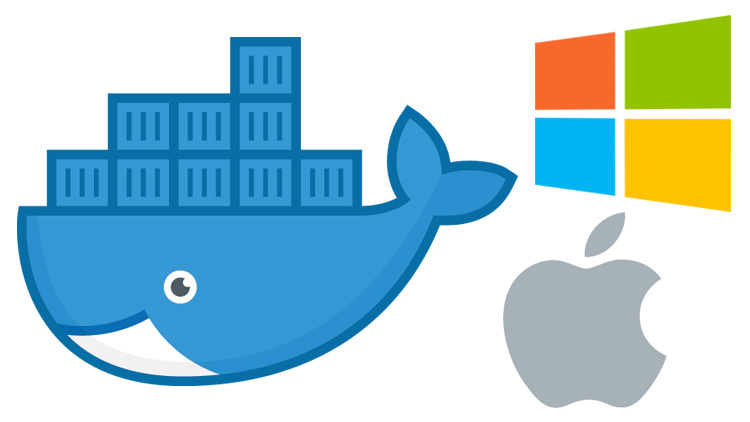


You can find all different versions of the Docker toolbox from its official Github repository.
Docker for mac and windows windows#
For Windows 10, the Docker Desktop application can be downloaded from Docker Hub - Docker Desktop App for Windows.įor Windows versions before Windows 10, we will have to follow the legacy approach for docker installation which requires installing the docker toolbox on Windows. Well, from Windows 10, a virtual machine is packaged along with the operating system which docker uses for its setup. As we know that Docker containers are based on Linux Kernel and all the containers running in docker utilizes the same OS Kernel then how does the docker setup work in a Windows environment?

Docker for mac and windows install#
To learn more about Gremlin Attack types, visit the Gremlin Docs.Docker provides a desktop application that is super easy to install and run on a Windows operating system. Now you can start running Chaos Engineering attacks and Scenarios with Gremlin. You now have Gremlin up and running locally with Kubernetes and Docker Desktop. When we view cartservice.yaml we see that cart service uses Redis but it does not use clustered Redis. When we run kubectl get pods we will see there is only one cartservice running and it has no redundancy. For example, we can see the error "could not retrieve cart". To mitigate this issue we would need to first investigate why we saw the error and look into the logs. It instead threw a 500 internal server error: We actually saw that the Hipster Shop: Cloud-Native Microservices Demo Application demo did not gracefully handle shutdown. Our hypothesis was, "When shutting down my cart service container, I will not suffer downtime and Kubernetes will give me a new one." You can view the state of the pods with kubectl:Īlso, make sure to check out the demo app to test user experience to see if your hypothesis is correct. Then click on the green Unleash Gremlin button. We will leave the delay set to 1 minute and turn off the reboot. We will be doing a state Chaos Engineering Attack, so select “State” and choose “Shutdown” from the options. We will now go over to choosing the Gremlin. We can find the container we want to target by expanding the Deployments field and selecting "cartservice". Gremlin has imported the objects from Kubernetes and we can see them in the UI. We will be shutting down the “cartservice” containers. We’re going to target a Kubernetes resource, so click on the Infrastructure tab, then click on Kubernetes in the upper right. Going back to the Gremlin UI, select Attacks from the menu on the left and press the blue “New Attack” button. I expect that my application’s cart will be replaced by Kubernetes after it is shutdown”. Our hypothesis is, “When shutting down my cart service container, my entire application will not suffer downtime and existing data in my cart will not be lost since it’s stored in Redis. We want to validate our application’s reliability. We are going to start practicing Chaos Engineering by creating our first Gremlin Scenario. Step 9 - Run a Gremlin Scenario to validate reliability Now visit localhost in your browser to view the Hipster Shop: Open Terminal (Mac/Linux) or Command Prompt (Windows) and check that your Kubernetes cluster is up and running by typing: Step 2 - Verify your Kubernetes cluster is up and running If you break your cluster or do something wrong, the fastest way to get back to a clean slate is to just click that button. Note: the Reset Kubernetes Cluster button within Preferences is very handy. If you've used Docker Desktop before, make sure to select the correct Kubernetes context: click on the Docker Desktop icon in the menu bar, then select Kubernetes > docker-desktop.Īdvanced: You can also set your context via the command line using kubectl. Once Kubernetes is up and running, you'll get a green light and it will say " Kubernetes is running". Click "Apply & Restart" to finish the installation. Next, click on preferences within the Docker Desktop main menu, select Kubernetes, then click Enable Kubernetes. First, you'll need to sign in or create a Docker ID. You'll see a little Docker icon (whale) in your menu bar. If you are using Windows you will likely get a prompt for a required kernel update. You will likely need to restart your computer to install Docker Desktop. Sign Up Log in Step 1 - Install Docker Desktopįirst you will need to install Docker Desktop if you do not yet have it on your local computer, follow the instructions provided by Docker.


 0 kommentar(er)
0 kommentar(er)
